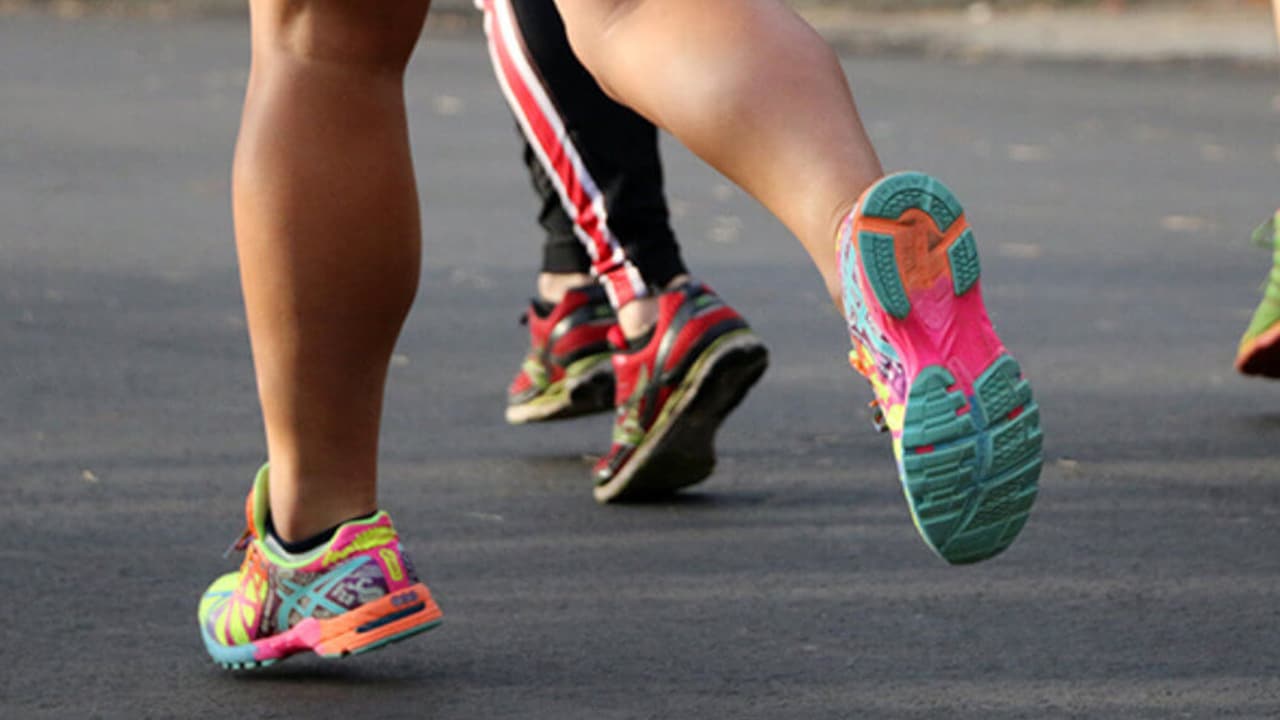How many times have you started a run and felt like your legs were made of concrete? Surprisingly, they might not feel so bad from something that you did as from something that you didn’t do. Taking good care of your legs before and after running can improve the ease in your running workouts, increase performance, and even speed up your recovery time.
Before Running:
1. Fueling
We suggest eating at least 3 hours before running. Be aware that almost nothing you eat immediately before a run will digest enough to give you energy during your run. If you have to eat, choose foods you can easily absorb, such as a banana, a spoonful of honey, or a handful of dried fruit.
2. Hydration
Drink at least 8 oz. of water a half hour before your workout. If you’re going for longer than a 10K, you might consider taking a water bottle or planning a route that has water stops along the way. Staying hydrated can help reduce lactic acid build-up and keep your legs from cramping, especially in hot weather.
3. Loosen up
Conventional wisdom is now recommends not to stretch before running. But, we recommend you try the ChiRunning Body Looseners instead. Ankle rolls, hip rotations, and knee circles are a few gentle exercises you can do to get your body loose and relaxed without straining cold muscles and joints. See the ChiRunning book or DVD for a detailed explanations.
4. Start off slowly
Begin running with a very relaxed, but shorter stride – not too fast. Increase your pace slowly until you’re running at your desired level. If you take off too fast, you risk “running out of gas” or producing too much lactic acid for your leg to burn off, and you’ll feel more soreness in your legs afterwards.
5. Check your shoes
Track the mileage on your running shoes. At about 500 miles, mid-soles can become too compressed to return to their original shape between runs, and your feet and legs will begin to notice. Be sure to replace your running shoes regularly. Make sure you are running in the best running shoes for you.
[thrive_leads id=’5814′]
After Running:
6. Stretch it out
After a 3-5 minute cool down jog, stretch thoroughly. Don’t just jump back into your car and head off to your next event, or you could be walking around with tight legs for the rest of the day. Doing a cool down and then stretching period allows the lactic acid (created by your muscles) to be flushed out into your bloodstream and eliminated from your body. It can also release any residual tension in your legs.
7. Soak for circulation
Take a hot bath or relax in a hot tub after your workout if you can. Soaking your legs warms your muscles, relaxes them, and aids in flushing out toxins and surplus lactic acid released during exercise. Unfortunately, a shower doesn’t work as well, but it’s still good for your legs if a bath is out of the question.
8. Freshen your legs
Do “leg drains” by lying on your back with your legs extended vertically and feet propped against a wall for 3-4 minutes. This drains the old blood out of your legs so fresh, clean blood can be pumped back into them when you stand up. You can do leg drains either immediately after stretching or after soaking. Either way, you’ll feel a marked difference in your legs afterwards.
9. Refuel your system
After strenuous workouts, your next two meals should be solid protein meals to help rebuild your muscles. Add in a hearty green salad and fresh vegetables to replenish your system with valuable minerals.
10. Rehydrate
Whether or not you’re a regular runner, you should be drinking water all day long. Eight to ten glasses of water spread throughout the day will replenish the fluid lost to exercise. Don’t drink your water all at once; just sip it… but keep an even flow going.
The more time you spend taking care of your body between runs, the more it will reward you with many years of enjoyable workouts. You’ll also notice an increase in your performance levels. It’s a universal law: the more preparation we put into something, the better the results. The same applies to your ChiRunning technique… as your running form gets more efficient, you can expect your recovery time to decrease. What’s not to like about that?
*Photo by Sura Nualpradid, Freedigitalphotos.net





